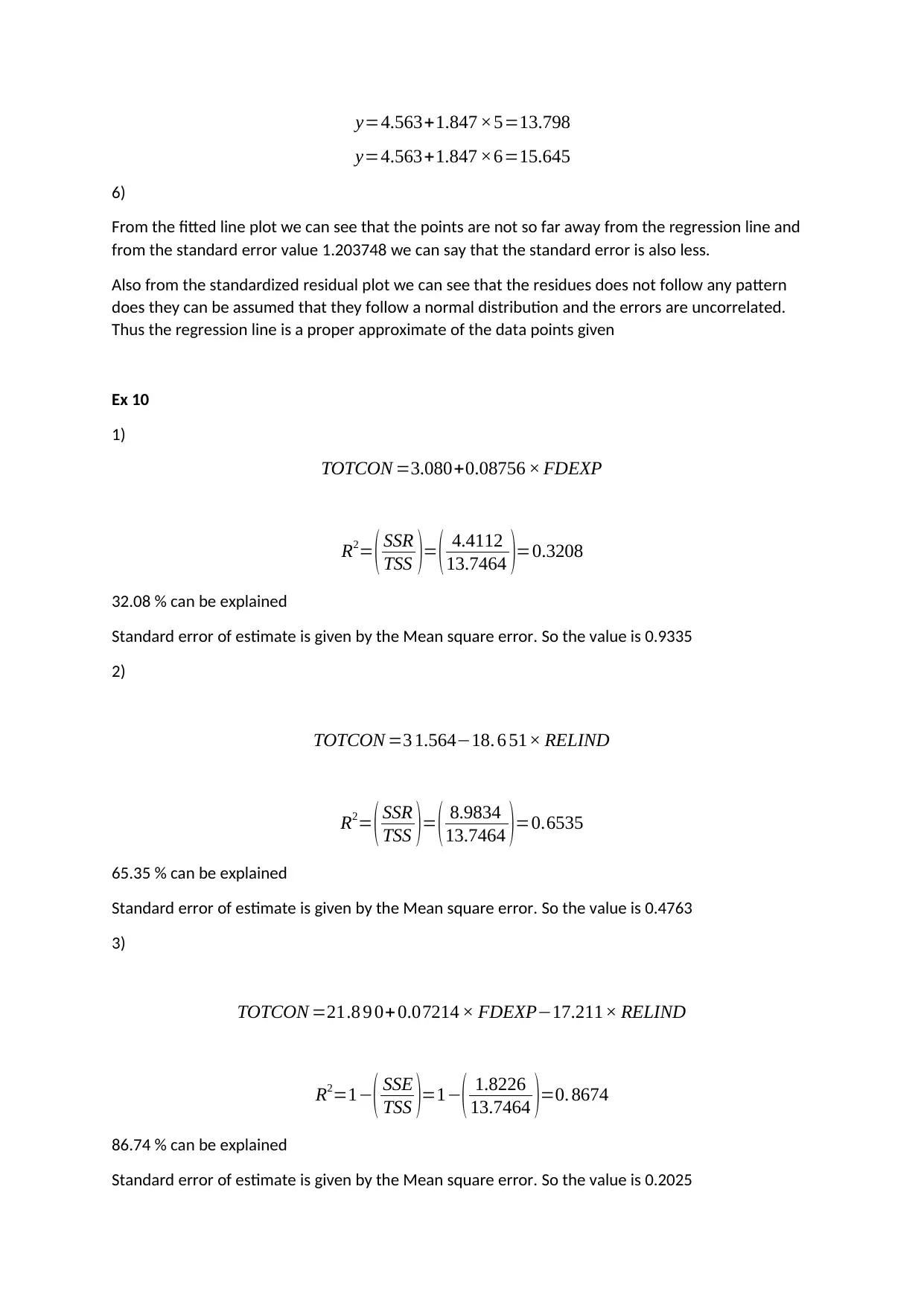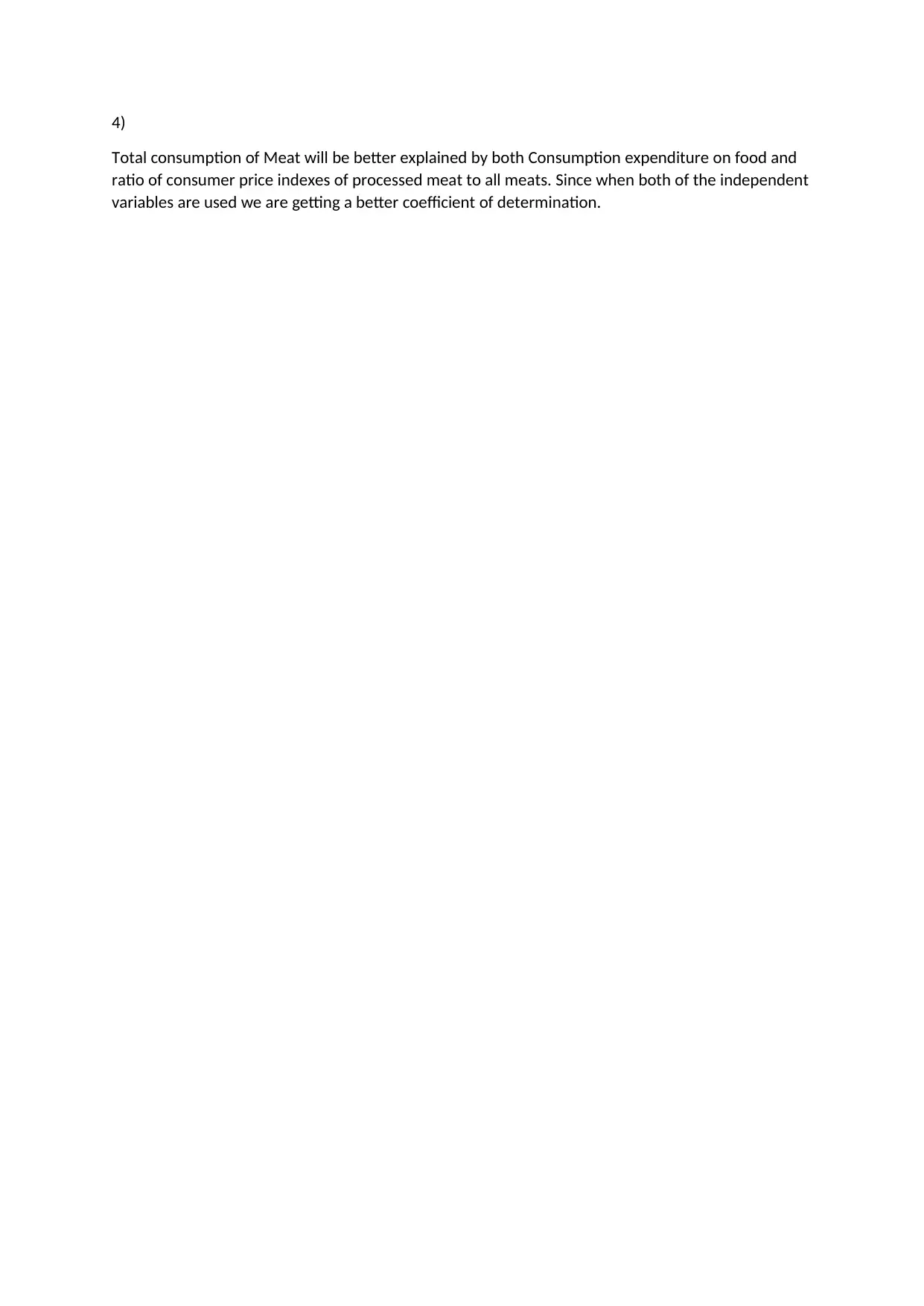Statistical Analysis of Consumer Behavior: Regression Homework
VerifiedAdded on 2022/12/21
|3
|477
|85
Homework Assignment
AI Summary
This document presents solutions to a statistics homework assignment. The first part of the solution analyzes the linear regression between consumer spending and income, including ANOVA results, R-squared value interpretation, correlation calculation, standard error analysis, and predicted values based on the regression equation. The second part explores multiple regression models to explain total meat consumption, evaluating the explanatory power of different independent variables like food expenditure and the ratio of consumer price indexes. The document provides detailed calculations and interpretations of statistical measures such as R-squared and standard error, offering a comprehensive understanding of the relationships between variables and the effectiveness of different regression models.
1 out of 3










![[object Object]](/_next/static/media/star-bottom.7253800d.svg)